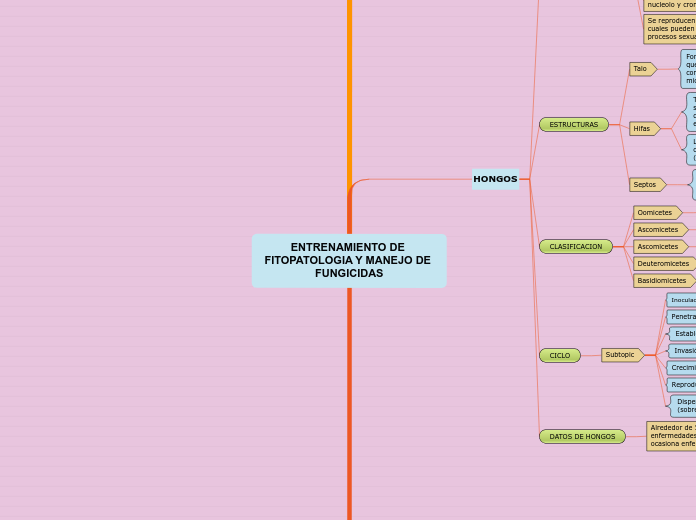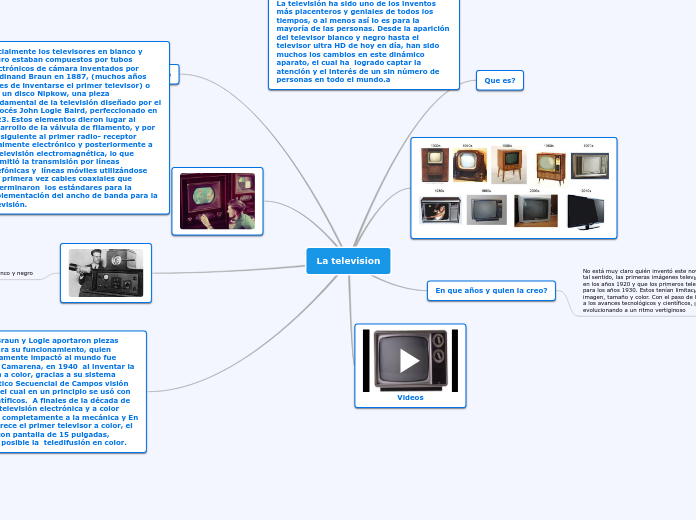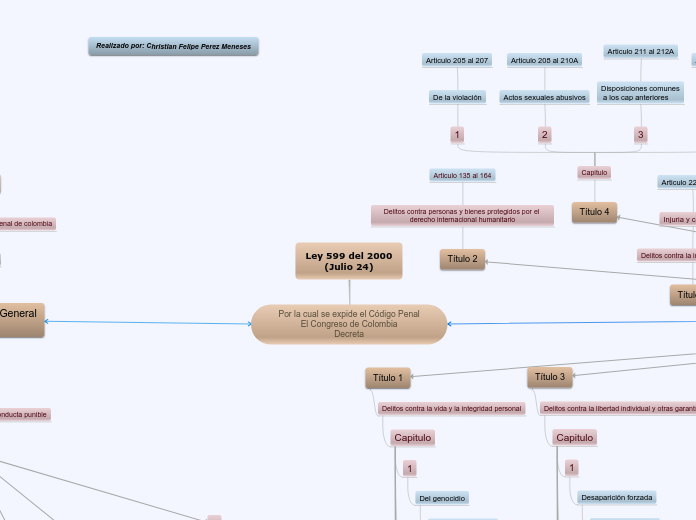ENTRENAMIENTO DE FITOPATOLOGIA Y MANEJO DE FUNGICIDAS
To name your story, you have to think about the overall message and what you want your audience to understand from the story. Also, make it relevant and easy to remember.
FUNGICIDAS
The ending of a story is essential. We all know that if the ending is weak, what happened before loses its importance. So make it unpredictable, but fair. A resolved ending answers all the questions and ties up any loose threads from the plot.
Categorías toxicológica de plaguicidas
This is the closure section of the story.
See examples of possible outcomes below:
- all problems have been solved
- it's clear how each one of your characters ends up
- your main character is transformed by the challenge
Extremadamente toxico (rojo)
Altamente toxico (amarillo)
Try answering these questions in order for you to come up with a closure:
- Have all problems been solved?
- Is it clear what happens with all your characters in the story?
- Has the challenged transformed your main character?
- How do the characters feel in the end?
Moderadamente toxico (azul)
Ligeramente toxico ( verde)
Try answering these questions to come up with a closure:
- Have all the problems been solved?
- Is there a clear picture of what happens with each character in the story?
- Has the challenge transformed your main character?
- How do the characters feel in the end?
CLASIFICACIÓN
FUNGISTÁTICO: Compuesto que previene o detiene el crecimiento o reproducción de un hongo sin matarlo (Importancia en hongos extracelulares).
FUNGICIDA: Producto químico que generalmente mata o inhibe el crecimiento de los hongos.
Se clasifican en 3:
ERRADICANTES: Productos que curan la infección en el sitio de aplicación
SISTÉMICOS: Productos que evitan el desarrollo de una infección en partes de la planta en el sitio de la aplicación y en sitios donde no se aplicó el producto.
PRINCIPALES GRUPOS DE FUNGICIDAS SISTÉMICOS
BENCIMIDAZOLES Y FUNGICIDAS RELACIONADOS
- Benomyl (Benlate, Promyl): Resistencia en Botrytis, Penicillium, Fusarium, Monilinia, Sphaeroteca, etc. En plantas herbáceas penetra más fácilmente que el Carbendazim
- Carbendazim (Bavistin, Derosal, Prozycar).
- Tiofanato (Cercobin).
- Tiabendazol (Tecto).
El tiofanato y el benomil penetran la cuticula del manzano más rápidamente que el carbendazim, mientras que el tiabendazol tiene un radio de control menor.
PIPERAZINAS:
Triforine (Saprol): contra cenicillas de cereales, manzano, pepino. La actividad
fotosintética es esencial para su transporte, por lo tanto aplicaciones por la mañana.
También contra Cladosporium cucumerinum, Colletotrichum, Ascochyta y Botrytis.
MORFOLINAS:
Tridemorf (Calixin) y Dodemorf (Meltatox): Actividad contra cenicillas y el Dimetomorf (Acrobat) actúa contra Oomycetes.
- El dodemorf es más activo contra cenicillas de ornamentales.
- El tridemorf es más efectivo contra cenicillas en cereales y sigatoka en plátano.
- Aldimorf: vs cenicillas.
CARBOXAMIDAS
Carboxin (Vitavax) y Oxicarboxin (Plantvax): contra Basidiomycetos (royas
y carbones) y Rhizoctonia solani.
CARACTERÍSTICAS
-Productos que se mueven en la planta.
-Muchos de ellos son parcialmente sistémicos (Solo se mueven desde el suelo hacia el follaje, debido a que es el lugar de transpiración de la planta)
-Estos fungicidas atacan grupos específicos de hongos, por lo tanto, el riesgo de resistencia es más alto que en los de contacto.
-Reducción del número de aplicaciones
-No expuestos a la degradación por factores ambientales
-Más efectivos por su capacidad de penetración y translocación.
PROTECTANTES: Proporcionan protección contra la infección en el sitio de aplicación y se aplican antes de la infección.
PRINCIPALES GRUPOS DE FUNGICIDAS DE CONTACTO
DITIOCARBAMATOS (1930-1934): Inicio de fungicidas puramente orgánicos.
-Tiram y Ferban (Tratamiento de semillas).
-Zineb y Maneb: Más ampliamente usados a nivel mundial.
-Mancozeb (Maneb + Zinc) Disminución de Fitotoxicidad del Maneb y mayor espectro de acción.
DERIVADOS DEL COBRE (DESDE 1885): Sulfato de cobre, oxicloruro de cobre,
óxido cuproso, hidróxido de cobre, sulfato tribásico de cobre.
DERIVADOS DEL AZÚFRE (DESDE 1803). Actividad contra cenicillas, royas
y ácaros- Fitotoxicidad a altas temperaturas (30°C).
- Afectan varias rutas metabólicas del hongo (Difícilmente
resistencia)
- Amplia gama de control de enfermedades
- Poco o nulo movimiento de redistribución en las plantas.
- Ineficaces en infecciones establecidas.
- Aplicarse antes de que el hongo penetre al hospedante.
-Sujetos a degradación por Luz, Lavado de Lluvia, etc.
-Los sitios de crecimiento quedan desprotegidos.
-Importante el mayor cubrimiento del follaje.
HONGOS
The middle of the story is where you add layers of complications that will lead to the end. Reveal more about the character's journey. Did their personality go through changes? How did they overcome the challenges? And as you build up the story’s central conflict, make it more personal to that character. Also, from the middle act, you have to lead into the final act.
DATOS DE HONGOS
Alrededor de 50 especies de hongos producen enfermedades en el hombre y casi el mismo número ocasiona enfermedades en los animales
CICLO
Subtopic
Dispersión y supervivencia del patógeno (sobrevivencia).
Reproducción
Crecimiento
Invasión (colonización) síntomas
Establecimiento de la infección síntomas.
Penetración
Inoculación
CLASIFICACION
There wouldn't be any tension and excitement in your story if there weren't any obstacles in your character's way.
Basidiomicetes
Puccinia, Tilletia, Hemileia
Deuteromicetes
Botrytis, Alternaria, Funsarium
Cenicillas, Sclerotinia, Mycosphaerella
Ascomicetes
Mucor, Choanephora cucurbitarum
Oomicetes
A story is nothing more than a character overcoming a series of difficulties to reach the desired goal. Obstacles usually create suspense and conflict. In overcoming obstacles, there is growth: weak becomes strong; hatred turns into love; sadness into happiness; wrong into right; lies into truth; or evil becomes good.
See a few examples below:
- stopping a meteor
- finding a killer
- finding love
Pythium, Phytophthora, Mildius
ESTRUCTURAS
Each story has a main character and that character usually needs to solve a problem or challenge. The character's challenge is the one that creates tension throughout the story.
Septos
Se forman siempre de la pared hacia adentro y no son completos, siempre tienen unos poros más o menos grandes.
Hifas
Type in any other challenges which other characters in the story need to face.
La mayoría de los hongos tiene septos que dividen el contenido citoplasmático en diferentes zonas (células).
Tienen una masa citoplasmática multinucleada que se contiene dentro de una estructura tubular rígida que se desplaza característicamente hacia el extremo.
Talo
In most stories, there are 3 challenges. The number 3 is a mystical number symbolizing completeness. Try to come up with interesting challenges with which your character needs to struggle.
See a few examples below:
- turns into a werewolf at night
- is sent back in time
Formado por filamentos
que se llaman hifas y el
conjunto de hifas se llama
micelio.
CARACTERISTICAS
Your character(s) need(s) motivation in order to solve the challenge(s).
Se reproducen principalmente mediante esporas las cuales pueden formarse de forma asexual o por procesos sexuales
Células con 1, 2 o 3 núcleos HAPLOIDES , tienen nucleolo y cromatina.
Poseen pared celular formada por quitina, celulosa o ambas = interacción con el medio
Secondary characters also might have motivs beacuse of which they may cross path with main character or which might trigger them to help the main character.
Carecen de clorofila
Secondary characters might also have motives that lead them to cross paths with the main character or which might trigger them to help the main character.
La mayoría posee un soma raíz-vegetativo
similar al de las plantas y se denomina micelio y las bifurcaciones individuales o filamentos del micelio se les denomina hifas.
Why does your character need to confront this challenge? What does he/she expect to accomplish by solving it?
See a few examples:
- will marry in 3 days
- can fix the mistakes of the past
Topic principal
Ciencia que estudia las enfermedades vegetales para encontrase medios de prevención y combate.
ENFERMEDAD
In the beginning of the story (or the exposition), you will need to introduce the setting and characters. You might also want to introduce the main conflict. This part of the story is important because it gives the reader necessary background information and maybe even a first insight into a character’s personality.
Cualquier mal funcionamiento de las células y tejidos del hospedante, que resulte de la irritación continua de un agente patógeno o factor ambiental que lleva al desarrollo de síntomas.
Characters are essential to a good story. Usually, the protagonist(s) is/are the most affected by the plot. Introduce a character by focusing on their actions, interests, and occupation, as the physical appearance doesn't make a difference in most cases.
LAS ENFERMEDADES SE DIVIDEN EN:
Síndrome
Conjunto de manifestaciones
Signo
Manifestaciones del patógeno que se
pueden ver a simple vista
Síntomas
Manifestaciones visibles de una enfermedad (Alteración de crecimiento, Coloración, Muerte de Tejido, Marchitez).
REQUISITOS PARA DESARROLLO DE ENFERMEDAD
FORMAS DE TRANSMISIÓN
Maquinaria
Herramientas
Insectos
Hombre
Animales
Lluvia
Semillas
Viento
Patógeno virulento, hospedero susceptible. ambiente favorable y intervención del hombre.
ENFERMEDADES NO INFECCIOSAS O ABIOTICAS
Las consecuencias de este tipo de factores son:
-Bloqueo de la translocación de los nutrientes minerales, alimentos y agua
-Alteración o inhibición del metabolismo de las células hospedantes
-Debilitamiento del hospedante
-Temperaturas muy altas o muy bajas
-Falta o exceso de humedad en el suelo
-Falta o exceso de luz
-Falta de oxígeno
-Contaminación atmosférica
-Deficiencia de nutrientes
-Toxicidad mineral
-pH del suelo
-Toxicidad por plaguicidas
-Prácticas agrícolas
Son factores ambientales
ENFERMEDADES INFECCIOSAS O BIOTICAS
Hongos, bacterias, virus, nematodos y micoplasmas, micoplasma ,
Son ocasionadas por organismos vivos
CONSECUENCIAS
Type in the name of your character.
Bloqueo de la traslocacion de los nutrientes minerales, alimentos y agua.
What is your character's main goal?
fight Evilfind lovedefeat his/her enemyrule the worldmake friendstime travelmake an awesome discoveryOther
Alteracion o inhibicion del metabolismo de las celulas ospedantes.
Which traits best describe the character's personality? Choose more if necessary:
introvertedloyalkindindependentquick-thinkingadventuresomeidealisticsweet-naturedcalmrisk-takercreativewittystrictfussyweirdclumsyharshaggressivecarelessclingingcowardlycrueldeceitfulimpulsiveOther
Debilitamiento del hospedante.
Choose the type of your chacter:
Protagonist (main character)Antagonist (main character's opponent)Flat (stereotypical character)Round (his/ her personality develops throughout the story)Static (doesn't evolve as a person throughout the story)Dynamic (dramatical change in personality)Confidant (the main character trusts him/ her)Foil (contrasting character who enhances the personality of another character)Other










